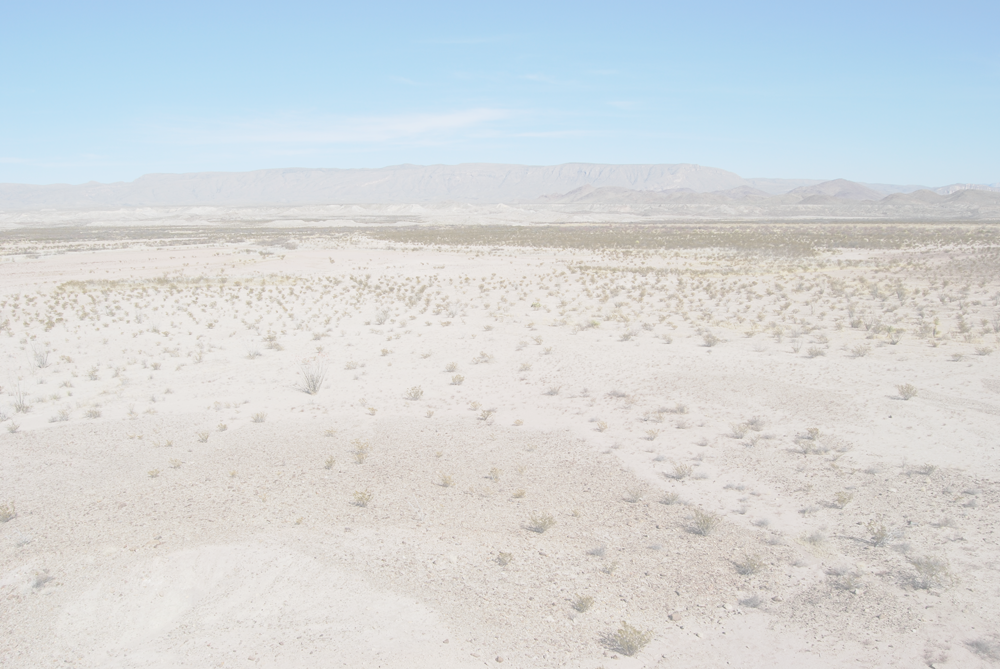“The prevailing notion that each country ends at the boundary is certainly accurate from a political point of view, but it is incorrect in many other respects ... The massive movement of people and products across the border and the sharing of resources, jobs, and space make clear that the sharp division implied by the line of demarcation does not mirror reality.” - Oscar J. Martínez, Troublesome Border
International borders are not as clearly defined as prevailing notions arguably make them appear. While explicit lines do exist, those political boundaries can never completely separate one nation from another. The exchange of peoples, cultures, and industries continues, creating a hybrid society that simultaneously represents both and neither. Perhaps nowhere is this circumstance more unmistakable than in the Texas-Mexico border zone, seemingly divided by the channels of the Rio Grande, or Rio Bravo, as the river is known in Mexico. Repeatedly redrawn by treaties, or moved through occasional shifts in the course of the Rio Grande, the Texas-Mexico boundary is a changeable entity—literally and figuratively—that has been a matter of dispute since the Texas Revolution. As a result, the Texas borderlands are an exceedingly varied and evolving space, one of perpetual conflict and social tension, bi-national negotiation and cooperation, and rich cultural diversity and heritage. At a time when issues like immigration and border security are of increasing political prominence, we must take a closer look at the intersecting layers of discourse that shape the region's complex history. LA FRONTERA FLUIDA (THE FLUID BORDER) explores the Texas borderlands through its representation on film, drawing from newsreels, documentaries, educational films, and home movies to examine not only the varied experiences of its residents but also its place within the mythology of Texas.
"La idea predominante de que cada país termina en el limite con otro país es cierta desde el punto de vista político, pero en muchos otros aspectos es incorrecta ... El recorrido enorme de personas y comercio a través de la frontera, y el reparto de recursos, trabajo, y espacio, dejan claro que la división nítida sugerida por la línea fronteriza no refleja la realidad." - Oscar J. Martínez, Troublesome Border
Las fronteras internacionales no están definidas tan claramente como la creencia general las hace parecer. Aunque sí existen fronteras explícitas, jamás pueden separar dos países por completo. El intercambio entre personas, culturas, y comercio sigue adelante, desarrollando una sociedad híbrida que, a la vez, representa a los dos países ya ninguno. Probablemente el ejemplo más obvio de este fenómeno se refiere a la zona fronteriza entre Texas y México, supuestamente dividida por los canales del Rio Grande, o el Rio Bravo, como lo llaman en México. Reiteradamente revisada por los acuerdos oficiales, o modificada de acuerdo con los cambios en el Rio Grande, la frontera entre Texas y México ha sido un límite variable—literalmente y figuradamente—y también un motivo de conflicto desde la revolución de Texas. Como resultado, la zona fronteriza de Texas forma un espacio diverso, siempre en evolución, un espacio de conflicto y tensión social perpetua, negociación y cooperación binacional, además de una herencia y diversidad cultural abundante. Hoy en día, cuando asuntos como la inmigración y la seguridad de la frontera están de creciente importancia en la política, debemos hacer un análisis más detallado de la intersección de los discursos que determinan la historia compleja de la zona. LA FRONTERA FLUIDA (THE FLUID BORDER) explora la zona fronteriza de Texas por su representación cinemática, sacada de noticieros cinematográficos, documentales, películas educativas, y película casera para examinar no solo las experiencias variadas de los residentes, sino también su lugar dentro de la mitología de Texas.




